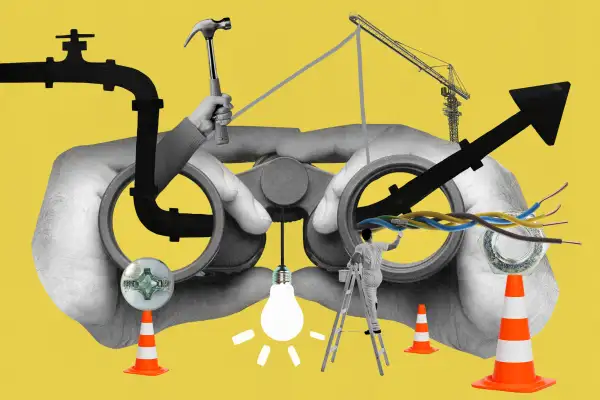Tech Layoffs Loom, but These Industries Are Still Hiring

Large-scale layoffs at tech companies in recent weeks may have you thinking the job seekers' paradise of last year is officially over. But job openings from across the labor market paint a more complicated picture.
Hiring in industries like healthcare and education is holding up well this year, while some industries, like utilities, are outperforming compared to this time last year.
And even though hiring overall in the U.S. has declined by 10.6% in the past year, according to LinkedIn’s data, the pace is still strong by historical standards. The economy added 261,000 jobs in October — the smallest amount since December 2020, but significantly higher than the pre-pandemic monthly average of 164,000.
The recent pullback in hiring has affected most industries, but the biggest outlier is the utilities sector (think: jobs in electric, gas, water, etc.). Hiring in utilities is up 23.3% in the past year, despite a slight drop in hiring between September and October.
LinkedIn also found hiring grew last month in hospitals and health care, which is one of the better performing industries this year with a hiring decline of just 5.1%, says Guy Berger, principal economist at LinkedIn.
Like utilities, medical care is something people always need and will spend money on regardless of what’s going on in the economy. In October, hiring also increased in consumer services, education, government administration and a category that includes farming, ranching and forestry.
In general, industries that make revenue from services are performing better than those focused on selling goods, reflecting a shift in what Americans are buying.
“People still have money to spend, and they’re spending on consumer services, so those things are holding up okay,” Berger says. “On the opposite side, you have some sectors that have really been hit by tighter financial conditions from the Fed raising rates.”
Hiring soars in the utilities sector
Hiring numbers are up in energy transmission and distribution, as utility providers try to keep up with high demand from consumers and businesses, according to Jim Harrison, director of renewable energies at the Utility Workers Union of America, AFL-CIO.
“It's a recession proof sector for the most part,” Harrison says. “People still need to have the essentials for a modern day life. They need to have light, heat, power and water and those kinds of things.”
Within utilities, hiring isn’t up across the board. Hiring has declined in some areas of power generation, including jobs at fossil fuel power plants and nuclear plants.
But hiring is ramping up significantly in renewable energy careers and in work around “grid hardening,” which refers to initiatives to make utilities infrastructure more resilient to natural disasters and extreme weather, Harrison says.
Some of that buildup is thanks to an infusion of government dollars: The recently passed Inflation Reduction Act, which includes $369 billion in climate and energy provisions, is fueling growth in these areas.
Job postings rise for hands-on occupations
Cory Stahle, an Indeed economist, agrees job postings remain at a strong level, even though there’s been “a little bit of a pullback” from last year to this year amid high inflation and recession concerns.
Because the competition among employers for workers was so intense prior to the recent slowdown, job seekers still have the upper hand in many markets, especially for the industries in which hiring has only declined minimally.
Indeed tracks job openings based on occupation, and the company’s latest data shows job postings have increased this year in civil engineering (21.5%), sports (15.4%), beauty and wellness (13.5%) and dental (12.4%). Stahle notes that these are all occupations that typically involve work that needs to be done in person.
“The jobs that are growing the most in 2022 are the jobs that grew a little bit slower during the pandemic,” he says. “Those in-person jobs slowed down during the pandemic, [employers] were a little more hesitant to hire and now we're seeing them taking off.”
Hiring slumps in other industries
On the flip side, some of the occupations that had huge hiring growth during the pandemic, like jobs in warehousing and software development, have seen their hiring numbers slow down recently, Indeed reports.
This fall has been absolutely brutal for the tech industry, as a flurry of big tech companies have frozen hiring or laid off workers, headlined by Meta letting go of 11,000 employees, or 13% of the company.
Job openings in the real estate industry have plummeted, too. Hiring has dropped by more than 20% this year as the industry feels the impact of the Federal Reserve’s interest rate hikes, which pushed mortgage rates above 7% and dramatically slowed the pace of home sales.
The downward trends in these industries aren't necessarily an indicator of what's to come in other areas of the job market, though. Stahle says it appears hiring in these fields is returning to a more normal level after they posted booming numbers in 2021. That makes him less concerned about the downward trends.
"We're not seeing anything in the labor market that indicates that we're in a recession," he says.
